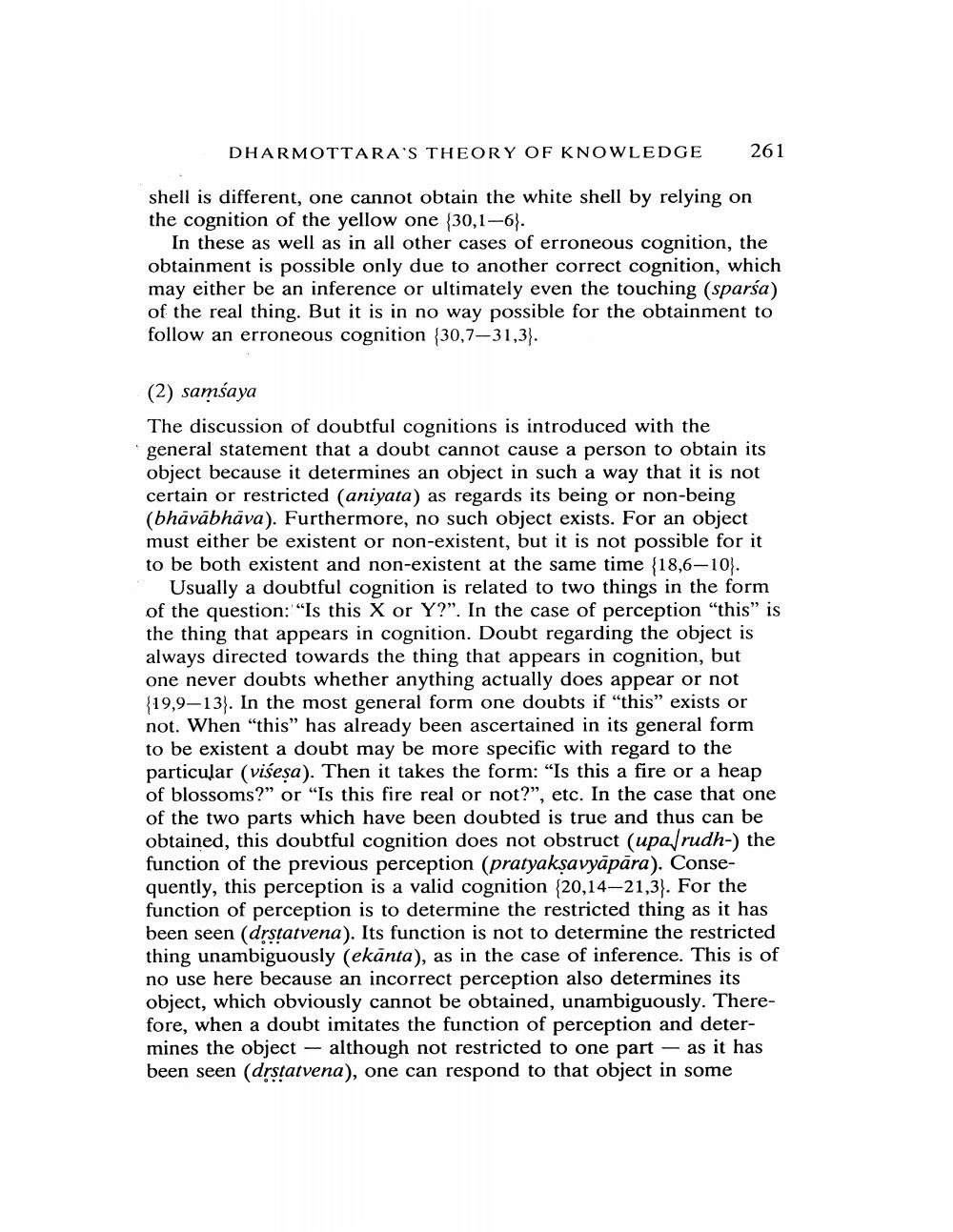________________
DHARMOTTARA'S THEORY OF KNOWLEDGE
261
shell is different, one cannot obtain the white shell by relying on the cognition of the yellow one (30,1-6}.
In these as well as in all other cases of erroneous cognition, the obtainment is possible only due to another correct cognition, which may either be an inference or ultimately even the touching (sparsa) of the real thing. But it is in no way possible for the obtainment to follow an erroneous cognition (30,7–31,3).
(2) samsaya The discussion of doubtful cognitions is introduced with the general statement that a doubt cannot cause a person to obtain its object because it determines an object in such a way that it is not certain or restricted (aniyata) as regards its being or non-being (bhāvābhāva). Furthermore, no such object exists. For an object must either be existent or non-existent, but it is not possible for it to be both existent and non-existent at the same time (18,6-10).
Usually a doubtful cognition is related to two things in the form of the question: "Is this X or Y?". In the case of perception "this" is the thing that appears in cognition. Doubt regarding the object is always directed towards the thing that appears in cognition, but one never doubts whether anything actually does appear or not (19,9-13). In the most general form one doubts if "this" exists or not. When "this" has already been ascertained in its general form to be existent a doubt may be more specific with regard to the particular (višeşa). Then it takes the form: “Is this a fire or a heap of blossoms?" or "Is this fire real or not?”, etc. In the case that one of the two parts which have been doubted is true and thus can be obtained, this doubtful cognition does not obstruct (upa/rudh-) the function of the previous perception (pratyakşavyāpāra). Consequently, this perception is a valid cognition {20,14–21,3). For the function of perception is to determine the restricted thing as it has been seen (drstatvena). Its function is not to determine the restricted thing unambiguously (ekānta), as in the case of inference. This is of no use here because an incorrect perception also determines its object, which obviously cannot be obtained, unambiguously. Therefore, when a doubt imitates the function of perception and determines the object - although not restricted to one part – as it has been seen (drstatvena), one can respond to that object in some




